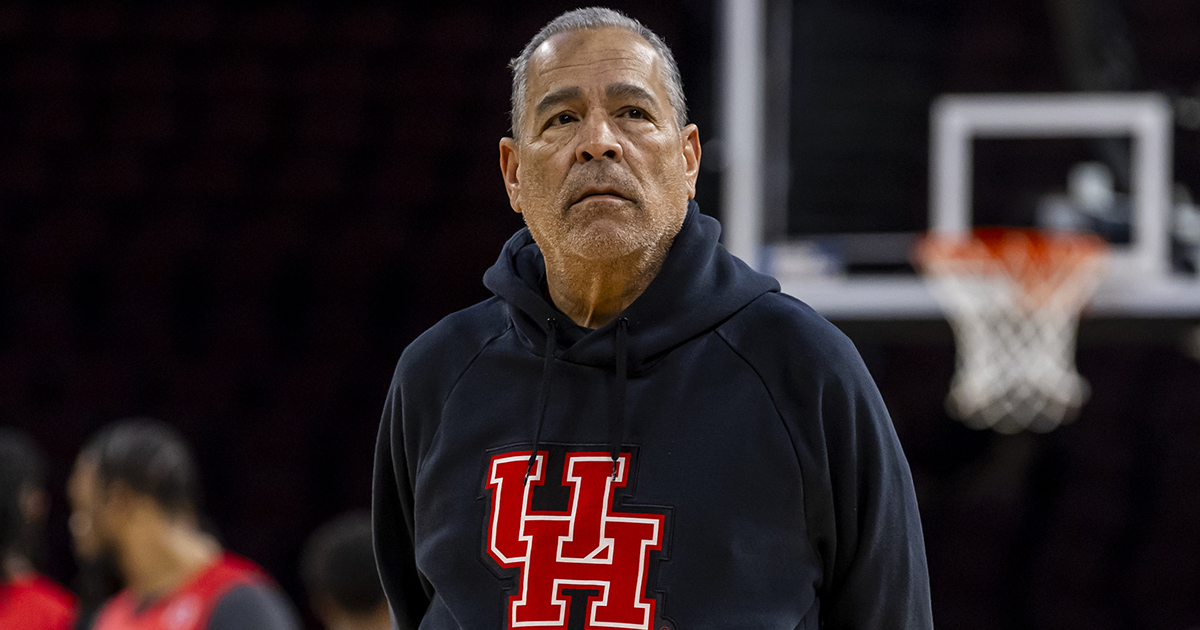Kelvin Sampson previews House settlement impact on college basketball: ‘The game will tell you what we’re going to do’

INDIANAPOLIS – April 7, the men’s national championship will tip off from San Antonio. The final two teams standing in the NCAA Tournament will play for a title at the Alamodome, marking the end of the 2024-25 college basketball season.
But in California, a court hearing could usher in a new era in college sports. The House v. NCAA settlement final approval hearing will take place that same day in the U.S. District Court of California. If approved, the revenue-sharing era in college athletics would be upon us as schools gear up to share up to $20.5 million directly with athletes.
As conferences and universities made their preparations, basketball programs have been charting a course for San Antonio for the national championship. Eight teams remain in the tournament, and Houston coach Kelvin Sampson will look to lead his Cougars to San Antonio when they take on Tennessee on Sunday at Lucas Oil Stadium.
But as the season went along, conversations about the House settlement had to take place. It started at the top with presidents and athletics directors, and coaches will now get ready to navigate roster-building if the agreement receives full approval.
“We’ve all had to have those conversations,” Sampson said Saturday when asked by On3 about balancing House preparations with a tournament run. “The real conversations had to [be between] the athletic directors and the presidents. That’s where the conversation started. … But the conversations between the ADs and presidents, the football coach and basketball coach are right behind them.
“What are we doing here? How are we going to handle this number? What’s the disbursement like? What percentages are we looking at? We have to know because we have to recruit a roster.”
With the $20.5 million cap under the House settlement, schools have had to decide how to divide those funds. For schools with football, upward of 75% to 85% of that figure is expected to go toward football. Universities or basketball-conferences that don’t sponsor football will instead send more toward basketball, and On3’s Pete Nakos reported just how much leagues such as the Big East can set aside for athletes.
That $20.5 million is only the cap for 2025-26, though, as set by the Power Conferences. The figure is 22% of the average revenue for a Power Conference school in the previous year, and it’s set to then increase by 4% each year as part of the settlement agreement.
As for how much will go to basketball in the future, Kelvin Sampson said it’s out of anyone’s control. He pointed out just how much the sport has grown during his time on the sidelines, and said just as it’s done throughout his career, the game will dictate how many resources it gets.
“Here’s a number for this year. I think it’s $20,500,000,” Sampson said. “That’s this year. This game is going to tell us what they’re going to do. Here’s your number next year. That didn’t come from a president or an athletic director or a coach. It came from the game. The game will tell you what we’re going to do and all we’re doing is reacting to it.
“We used to be in control of this game. No. Nobody controls college basketball. We just sit and figure out what to do next. So right now, here’s what we’re dealing with. Next year, who knows where it’s going to take us. So, you never know.”
The post Kelvin Sampson previews House settlement impact on college basketball: ‘The game will tell you what we’re going to do’ appeared first on On3.
